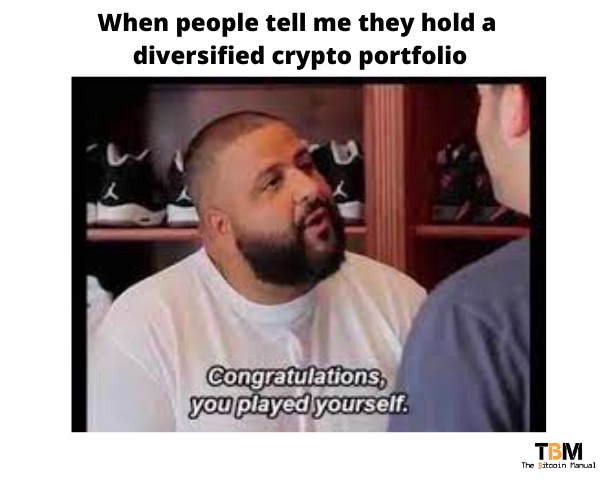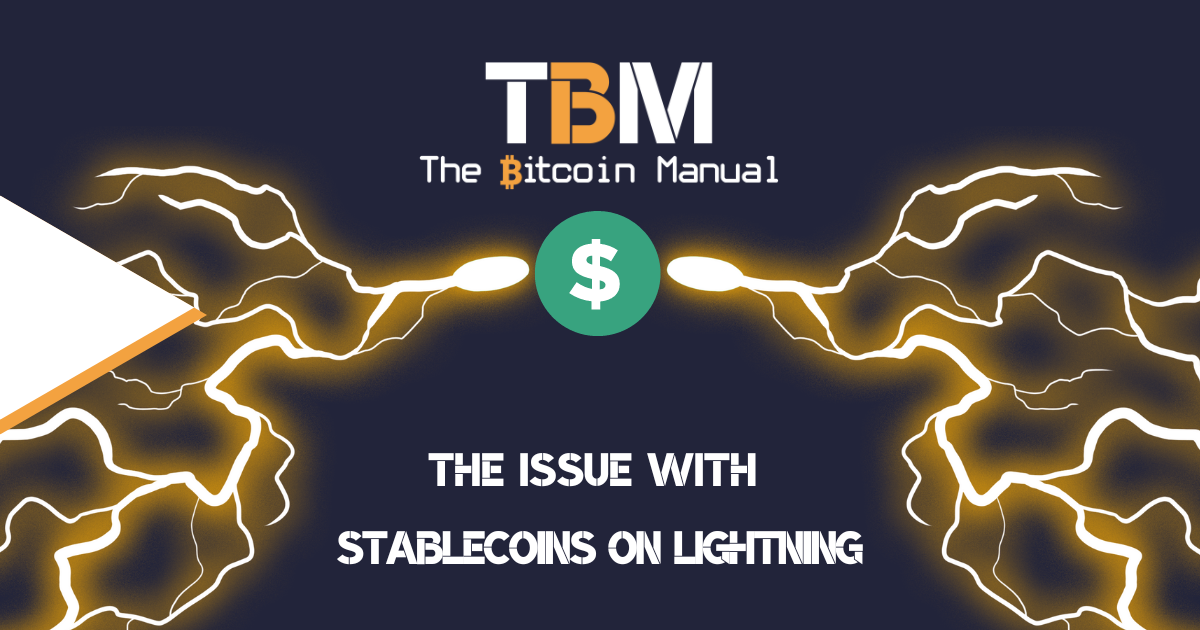If there is one tired old trope I hear paraded around by shitcoiners as a reason to justify their gambling, then it’s the idea of diversification. Look at me; I am a savvy investor. I don’t put all my eggs in one basket. It’s an old cliche that people repeatedly repeat as if it’s a fact and can be applied to anything to reduce risk and make you seem more intelligent without thinking.
Let’s get something out of the way first, yes diversification is a good idea, but you have to know how to apply it and when not to apply it.
Diverisyign in its modern form comes from the Venture Capital (VC) playbook; you raise a bunch of capital. Then you make bets on a market you think has the potential to expand.
Then the next step is to invest in a range of players and hope one of your markets plays works out and dominates. Your strategy relies on one unicorn making up for all the crap you invested in while trying to guess the winner.
Yes, those are people managing other peoples money and raising capital for fees; they could care less about the fund. You can’t apply that same thinking to your modest piggy bank. People see these strategies and think they can mimic them with their portfolio since no one wants to research; they only want to copy trade.
The idea of diversification.
My interpretation of diversification is the goal of limiting your downside while still having exposure to volatility and potential upside. To accomplish this, you would focus on assets that have a low correlation towards one another.
So if value flows from one asset class to another, you can capture the spread by trading your position when it’s overvalued or repositioned as value moves between asset classes.
To illustrate the idea using a simple example, the 60/40 rule comes to mind. The 60/40 rule refers to the concept that your portfolio should be 40% equities and 60% bonds. The theory is based on the notion that if bond interest rates decrease, capital looking for yield flows into equities. If equities become overvalued or too risky, money flows into bonds which are seen as the risk-free rate.
Now even this isn’t diversified as both asset classes are short volatility, but that’s a story for another day.
Let us dissect the cryptocurrency diversification idea.
So if the theory is to try and capture apposing capital flows, what flows are you capturing by investing in poorly performing correlated assets. It’s a known fact that all cryptocurrency is tied to bitcoin’s performance; when it rallies, they do; when bitcoin dumps, altcoins do it even harder.
They are leveraged bets on bitcoin, a short of derivative contract used to capture even more volatility. So what are you diversifying into, expect more risk? They are wholly correlated and sure capital flow isn’t distrubted equally. There are moments of overvaluation in specific coins, but are you capable of knowing what those prices are and when to get out?
If you can time the market, that’s great news for you, but this is probably not a repeatable action and one most people won’t hit, especially if they’re measuring their gains in fiat currency.
I hardly think it’s that easy, and I am pretty sure most traders trying to trade to increase their satoshi balance would have a hard time competing against dollar-cost averaging and fiat mining.
In most cases, when you diversify out of bitcoin for the “long term” hold, you are essentially buying the first, second, fifteenth and one hundred and twenty seventh loser. You are buying all the social media competitors to Facebook. You are buying all the search engine competitors to Google.
Does anyone remember who they are?
You are taking guaranteed losses in satoshis to put your mind at ease, and for some people, that is worth it. You’re betting on the off chance of a flippening, and each year bitcoin survives and grows the odds against that outcome.
Fiat money is a participation trophy.
The problem with what I am saying and why it may not make sense to many reading this is how we keep score. I keep score in satoshis, a unit that has appreciated purchasing power for 12 years straight. If my investment does not yield me more satoshis than simply buying it off the market, then it was a bad investment.
If we look at the cryptocurrency market, there hasn’t been a single coin that has held its satoshi value in the long term and continues to depreciate each year.
Unfortautnely, most people, don’t measure in satoshis; they measure their success in fiat currency. A unit of measurement that is completely broken; I mean, I have a coin of beans in my cupboard right now that is worth more fiat than it was last year; does that make it a good investment?
No, it’s only showing how poor a store of value the fiat currency is, so why would I measure my success in it.
The fiat world loves to give off the impression of stability when it is anything but, if it was stable, we would not need to invest at the rates we do today. What began as a controlled slow debasement of the currency continues to heat up each year as more currency units are required to keep the system afloat.
So the illusion can continue to perpetuate itself since people don’t measure in purchasing power but in units of fiat. Even though people are losing purchasing power, they are acquiring more fiat units and are feeling rich even if their investment is a negative return.
Fiat money acts as a participation trophy, so even if you are completely rubbish at investing, you feel you’re not because your currency in its value increased over any specific period.

It’s okay to make bad investment decisions.
We live in strange times, and everyone is looking for an answer to protect their purchasing power. For some reason, we think or feel like the more complicated a solution sounds, the better it must be, and cryptocurrency plays to that bias. Bitcoin is simple, honest, verifiable and secure; that’s it.
It doesn’t do much else than that, and it doesn’t need to; it’s provided with the most elegant solution to an obvious market problem of value theft over time and misallocation of resources.
It has succeeded in its mission and continues to succeed despite what anyone says, thinks, or what any other alt project does; that is a fact.
The money market is a winner take all market, the dollar won the fiat era, and sure you can point to other fiat currencies. Still, they’re only allowed to exist because of political games, not because of free-market choice.
Ask 80% of the world if they choose their local currency over the dollar and see what they say? There is no competition, and I see this happening with bitcoin too.
All these other tokens will exist just like the Zimbabwean dollar or Venezuelan Bolivar exist, but it doesn’t mean it’s useful. If it has a use to the market, it will maintain a shred of market cap, I suppose but as soon s that feature set is gobbled up by bitcoin, it’s bye-bye blockchain.
Walk your path, verify for yourself.
If you want to experiment, if you want to learn by experiencing these other ecosystems yourself, by all means, don’t let me stop you. Openly admit you want to do a bit of gambling, but please stop this pitch of you lowering risk and protecting yourself by buying things that are doomed to fail but could be overvalued in a short period in history.
It’s a lie and a dangerous one that naive investors are gobbling up. Shitcoiners and shitcoin apologists promote these ideas because it allows them to siphon off capital from bitcoin into their projects so they can have the liquidity to get out of their positions.
Diversification in cryptocurrency is using a sound market principle and applying it correctly, and you will learn the hard way.
You can choose to get burned and learn, or you correct your path and earn. Everyone’s path is different, and I am not saying this to a dog on anyone; I walked the path of the shitcoiner too; I wanted to figure it out on my own and eventually, I did, and I trust you will too in time.




